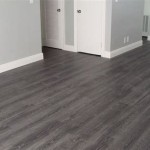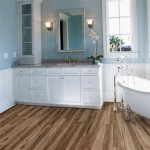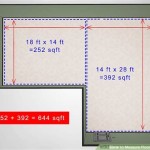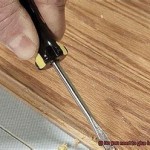Heated Tile Floor Cost Per Square Foot: A Comprehensive Guide
Heated tile floors offer luxurious comfort, especially in colder climates or during the winter months. Understanding the cost associated with installing these systems is crucial for homeowners considering this upgrade. The total cost per square foot can fluctuate significantly based on various factors, including the type of heating system, the size and complexity of the project, the type of tile chosen, and labor expenses.
This article provides a detailed overview of the different cost components involved in installing heated tile floors, equipping homeowners with the knowledge necessary to make informed decisions and budget accurately for their projects. Understanding these factors beforehand can prevent unexpected expenses and ensure a smooth installation process.
Key Components influencing the Cost Per Square Foot
Several key components contribute to the overall cost per square foot of installing heated tile floors. These can be broadly categorized into materials, labor, and any additional preparation or subfloor work that may be required. A thorough understanding of each component allows for a more accurate cost estimation.
1. Type of Heating System: The type of heating system chosen is a primary driver of cost. There are two main types: electric radiant heating and hydronic radiant heating.
Electric Radiant Heating: This is generally the more common and less expensive option for smaller areas like bathrooms or kitchens. Electric systems utilize heating cables or mats embedded within the thin-set mortar beneath the tile. The cost for electric heating mats typically ranges from $8 to $20 per square foot for the materials alone. This price can vary depending on the brand, wire gauge, and features like pre-spaced wiring and self-adhesive backing, which can simplify installation and potentially reduce labor costs. Electric systems are easier to install than hydronic systems, especially for DIY enthusiasts with some electrical experience.
Hydronic Radiant Heating: Hydronic systems circulate hot water through pipes embedded in the floor. These systems are more complex to install and are generally better suited for larger areas or whole-house heating. The cost of hydronic systems is significantly higher, ranging from $15 to $30 per square foot for materials. This higher cost is due to the complexity of the system, which requires a boiler or water heater, manifolds, pumps, and specialized piping. Installation is also more labor-intensive and typically requires a professional plumber and HVAC technician.
2. Tile Material and Installation: The type of tile chosen significantly affects the project's overall price. Ceramic and porcelain tiles are generally more affordable than natural stone tiles like marble or granite. The complexity of the tile installation also plays a role.
Tile Costs: Ceramic and porcelain tiles can range from $2 to $20 per square foot, depending on the style, quality, and size. Natural stone tiles, like marble, granite, or slate, can cost anywhere from $5 to $50 per square foot or even higher, depending on the rarity and quality of the stone. Specialty tiles, such as glass or mosaic tiles, can also be more expensive due to their intricate designs and potentially more challenging installation requirements.
Tile Installation Costs: The cost of tile installation typically ranges from $4 to $14 per square foot, depending on the complexity of the pattern, the size of the tiles, and the installer's experience. Intricate patterns, such as herringbone or mosaic designs, will require more time and skill, leading to higher labor costs. Larger tiles can sometimes be easier and quicker to install, potentially reducing labor costs, but they may also require more precise leveling and handling.
3. Labor Costs: Labor costs are a substantial portion of the total expense. These costs can vary based on the geographic location, the contractor's experience, and the complexity of the project. It's essential to obtain multiple quotes from qualified contractors to ensure competitive pricing.
Electric System Labor: For electric radiant heat, labor costs typically range from $5 to $10 per square foot. This includes installing the heating mats or cables, connecting the thermostat, and testing the system. The actual cost will depend on the project's complexity and the contractor's hourly rate.
Hydronic System Labor: Hydronic system labor costs are significantly higher, often ranging from $10 to $20 per square foot or more. This is due to the greater complexity of the installation, which requires a plumber to connect the system to the water heater or boiler, install manifolds and pumps, and pressure-test the system to ensure proper functionality and prevent leaks.
Factors affecting Total Cost beyond the Square Footage
Beyond the square footage, several other factors can impact the overall cost of installing heated tile floors. These factors should be considered during the planning and budgeting phase to avoid unexpected expenses.
1. Subfloor Preparation: The condition of the subfloor is crucial for a successful heated tile floor installation. If the subfloor is uneven, damaged, or not properly insulated, additional preparation work will be necessary. This can include leveling the subfloor with self-leveling compound, reinforcing it with plywood or cement board, or adding insulation to improve energy efficiency. The cost of subfloor preparation can range from $1 to $5 per square foot, depending on the extent of the work required.
Leveling: Uneven subfloors can cause tiles to crack or become uneven over time. Self-leveling compound is used to create a smooth, even surface for the tile installation. This process can add to the overall cost, especially if the subfloor is significantly uneven.
Reinforcement: If the subfloor is weak or damaged, it may need to be reinforced with plywood or cement board. This adds stability and prevents the tiles from cracking or shifting. The cost of reinforcement will depend on the materials used and the extent of the damage.
Insulation: Adding insulation beneath the heated tile floor can significantly improve energy efficiency and reduce heating costs. This is especially important for floors over unheated spaces, such as basements or crawl spaces. Insulation can be installed in the form of rigid foam boards or radiant barriers.
2. Thermostat and Control Systems: The type of thermostat chosen can affect the overall cost. Basic thermostats are relatively inexpensive, costing around $50 to $100. However, programmable thermostats with advanced features, such as Wi-Fi connectivity and energy monitoring, can cost $150 to $500 or more. These advanced thermostats allow for remote control and scheduling, which can improve energy efficiency and convenience. The installation cost for thermostats is typically included in the labor costs for the heating system.
3. Room Layout and Complexity: The layout of the room and the presence of obstacles such as toilets, cabinets, and islands can also affect the cost of installation. Complex layouts with many corners and curves will require more cutting and fitting of the heating mats or cables and tiles, increasing labor costs. Rooms with many obstacles may also require more careful planning and layout to ensure even heat distribution.
Estimating the Total Cost: A Practical Approach
To accurately estimate the total cost of installing heated tile floors, it's essential to follow a systematic approach that considers all the relevant factors. This involves measuring the area, selecting the appropriate heating system and tile, obtaining multiple quotes from qualified contractors, and accounting for potential additional expenses.
1. Measure the Area: Accurately measure the area where the heated tile floor will be installed. This will allow you to estimate the amount of materials needed and the labor hours required. Be sure to account for any irregularities in the shape of the room.
2. Choose the Heating System: Decide between electric and hydronic radiant heating based on your needs, budget, and the size of the area. Electric systems are generally more suitable for smaller areas, while hydronic systems are better for larger areas or whole-house heating.
3. Select the Tile: Choose the tile material and style that fits your aesthetic preferences and budget. Consider factors such as durability, water resistance, and ease of maintenance. Remember that natural stone tiles are generally more expensive than ceramic or porcelain tiles.
4. Obtain Multiple Quotes: Obtain at least three quotes from qualified contractors. Be sure to provide them with detailed information about the project, including the area to be heated, the type of heating system and tile selected, and any specific requirements or concerns. Compare the quotes carefully, paying attention to the scope of work, the materials included, and the payment schedule. Verify the contractor's licenses and insurance to ensure they are qualified and reputable.
5. Account for Additional Expenses: Set aside a contingency fund to cover any unexpected expenses that may arise during the installation process. This could include additional subfloor preparation, unforeseen plumbing or electrical work, or changes to the design or materials. A contingency fund of 10% to 15% of the total estimated cost is generally recommended.
6. Consider Energy Efficiency: When selecting a heating system and thermostat, consider the energy efficiency of the system. Programmable thermostats and properly insulated subfloors can help reduce energy consumption and lower heating costs over time. While these options may have a higher upfront cost, they can pay for themselves in the long run through energy savings.

How Much Does Radiant Floor Heating Cost 2025

Heated Floors In Bathroom Tips And Costs Warmlyyours
Heated Floor Cost In Toronto

How Much Does Radiant Floor Heating Cost 2025

The Ultimate Guide To Underfloor Heating Bestheating

The Real Cost Of Heated Floors Are They Worth It

Costs Benefits Of In Floor Heating Ahs

Ceramic Tile Flooring Installation Cost Fixr

Ceramic Tile Flooring Installation Cost Fixr

Underfloor Heat Mat 200w Living Electric Heating
Related Posts








